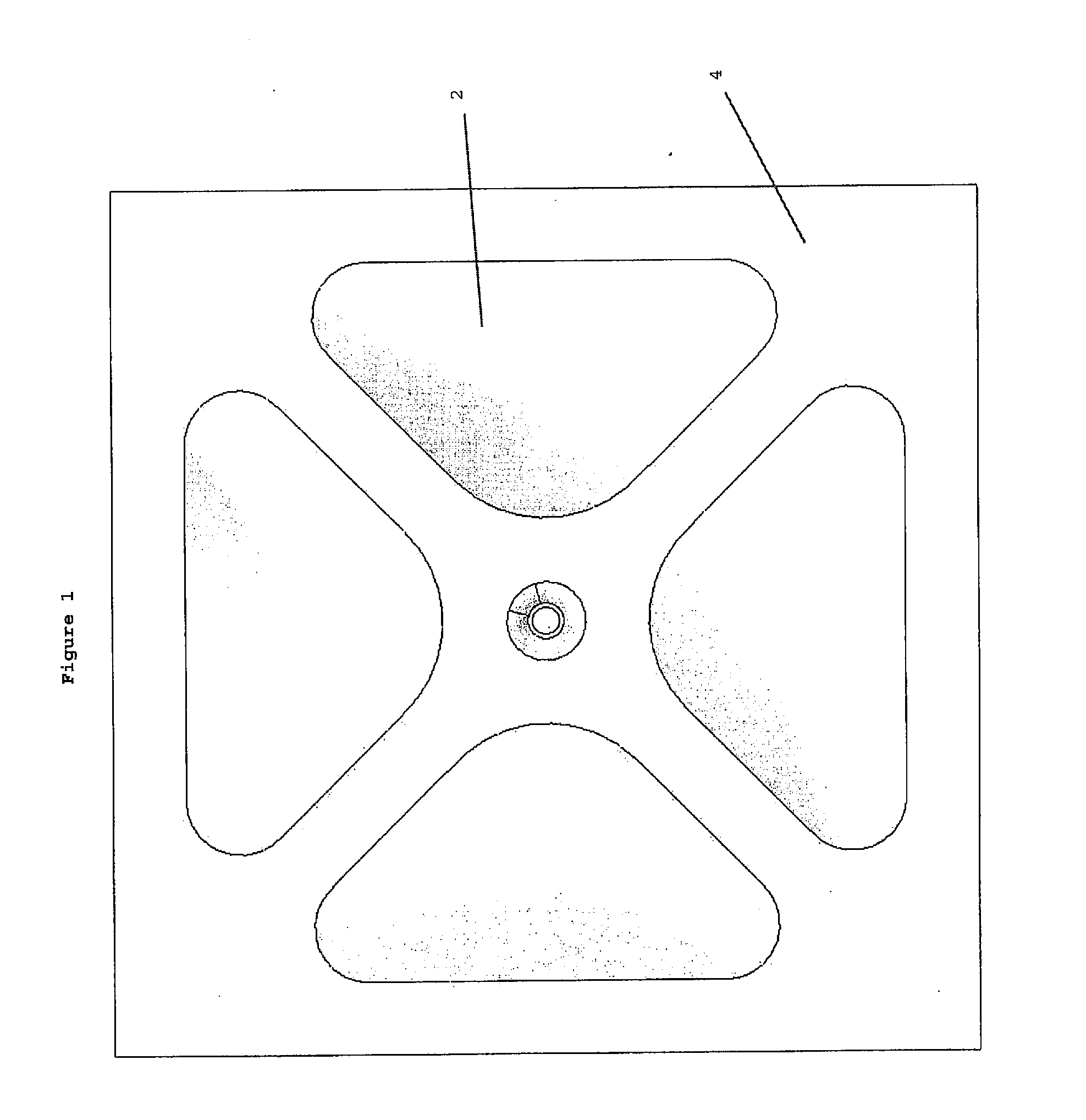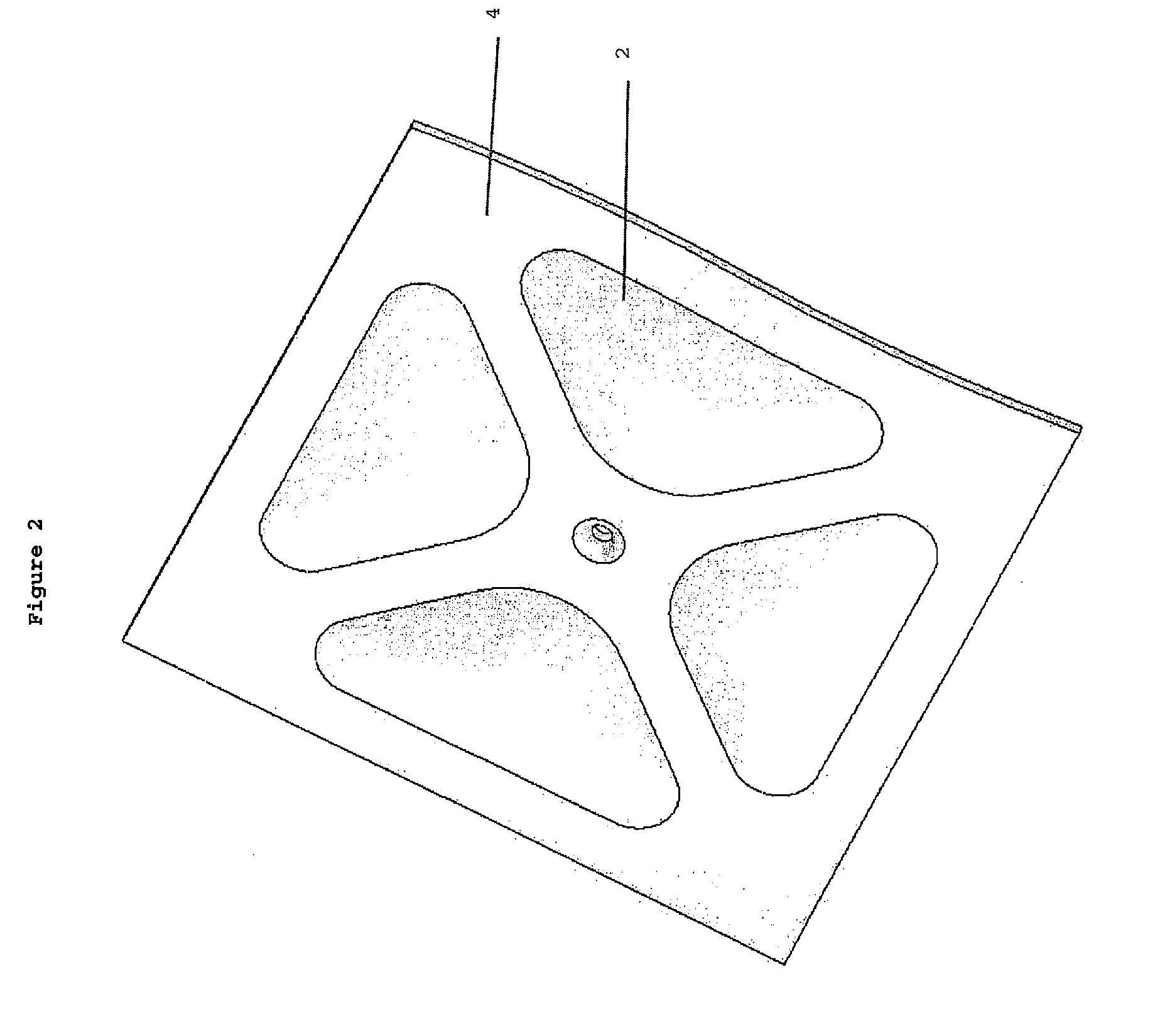Biodegradable vehicle panels
a biodegradable, vehicle panel technology, applied in the field of biodegradable polymeric compositions, can solve the problems of affecting the environment, affecting the use of petroleum-based composites, and 80% of material that cannot be recycled,
- Summary
- Abstract
- Description
- Claims
- Application Information
AI Technical Summary
Benefits of technology
Problems solved by technology
Method used
Image
Examples
example 1
[0128]The agar mixture was prepared in a separate container by mixing an appropriate amount of agar with an appropriate amount of water at or below room temperature.
[0129]A 50 L mixing kettle was charged with 25 L water and heated to about 50° C. to about 85° C. Half of the appropriate amount of protein was added and the pH of the mixture of adjusted to about 7-14 with a suitable base, for example a 1N sodium hydroxide solution. To the resulting mixture were added Teflex® and sorbitol, followed by the preformed agar mixture. The remainder of the protein was then added and a sufficient volume of water added to the mixture to bring the total volume to about 55 L. The mixture was allowed to stir at about 70° C. to about 90° C. for 30-60 minutes. The beeswax was then added and the resin mixture was allowed to stir at about 70° C. to about 90° C. for about 10-30 minutes.
[0130]The resin solution so produced was applied to a fiber structure such as a mat or sheet in an amount so as to thor...
example 2
[0134]The agar mixture was prepared in a separate container by mixing an appropriate amount of agar with an appropriate amount of water at or below room temperature.
[0135]A 50 L mixing kettle was charged with 25 L water and heated to about 50° C. to about 85° C. Half of the appropriate amount of protein was added and the pH of the mixture of adjusted to about 7-14 with a suitable base, for example a 1N sodium hydroxide solution. To the resulting mixture were added Teflex® and sorbitol, followed by the preformed agar mixture. The remainder of the protein was then added and a sufficient volume of water added to the mixture to bring the total volume to about 55 L. The mixture was allowed to stir at about 70° C. to about 90° C. for 30-60 minutes. The beeswax was then added and the resin mixture was allowed to stir at about 70° C. to about 90° C. for about 10-30 minutes.
[0136]The prepared resin was then subject to drying by spray drying or, alternatively, drum drying.
[0137]The dry resin ...
example 3
[0139]The agar mixture was prepared in a separate container by mixing an appropriate amount of agar with an appropriate amount of water at or below room temperature.
[0140]A 50 L mixing kettle was charged with 25 L water and heated to about 50° C. to about 85° C. Half of the appropriate amount of protein was added and the pH of the mixture of adjusted to about 7-14 with a suitable base, for example a 1N sodium hydroxide solution. To the resulting mixture were added Teflex® and sorbitol, followed by the preformed agar mixture. The remainder of the protein was then added and a sufficient volume of water added to the mixture to bring the total volume to about 55 L. The mixture was allowed to stir at about 70° C. to about 90° C. for 30-60 minutes. The beeswax was then added and the resin mixture was allowed to stir at about 70° C. to about 90° C. for about 10-30 minutes.
[0141]The prepared resin was then subject to drying by spray drying or, alternatively, drum drying. The dried resin was...
PUM
| Property | Measurement | Unit |
|---|---|---|
| particle size | aaaaa | aaaaa |
| molecular weight | aaaaa | aaaaa |
| temperature | aaaaa | aaaaa |
Abstract
Description
Claims
Application Information
 Login to View More
Login to View More - R&D
- Intellectual Property
- Life Sciences
- Materials
- Tech Scout
- Unparalleled Data Quality
- Higher Quality Content
- 60% Fewer Hallucinations
Browse by: Latest US Patents, China's latest patents, Technical Efficacy Thesaurus, Application Domain, Technology Topic, Popular Technical Reports.
© 2025 PatSnap. All rights reserved.Legal|Privacy policy|Modern Slavery Act Transparency Statement|Sitemap|About US| Contact US: help@patsnap.com



